The Tarot Garden of Tuscany
The Tarot Garden, or Il Giardino dei Tarocchi, wasn’t my first choice for a tourist stop during my recent trip to the Italian countryside.
Or my second, or my third.
My most recent vacation had been planned as a restful stay with my family in the rolling hills and farmland of Lazio, the province of Italy where Rome is located. A week in a Renaissance-era home, idyllic day trips to medieval hilltop towns—sounds relaxing, doesn’t it?
The trip was anything but. I’m not a terribly confident driver overseas, and local roads dominated by S-curves and honking locals irritated by my slow-poke driving style rattled me. I completed one white-knuckled ride after another, exploring towns like Orvieto, with its stunning cathedral, and the Etruscan tombs of Tarquinia.
The schedule for our last full day called for a visit to a beach, followed by a stop at the nearest tourist attraction on our list, an outdoor park filled with giant modern art sculptures. Getting to the coast was challenging enough. Finding the remote location of the park almost didn’t happen. Hours of driving had left all of us stressed, irritated, and grumpy. By the time we arrived, my family was close to revolt over my inability to decipher the rental car’s hapless navigation system, and I wasn’t in a particularly good mood to appreciate modern art.
We stepped out onto a dusty parking lot into the heat and humidity of July in Italy, and I seriously considering turning around and going home. But we had finally found the tourist destination we had spent hours looking for, so we paid a rather steep admission fee and walked up an elevated path to the Garden.
We turned a corner, and stepped into a psychedelic paradise of splashing water and riotous color. We had arrived in the Tarot Garden of Niki de Saint Phalle.
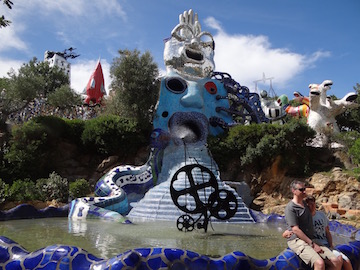
Sculptor, painter, filmmaker and wild child Niki de Saint Phalle wanted to create a sculpture park by and about women. The enormous structures she designed and built are based on the twenty-two figures of the Major Arcana in the Tarot deck.

My Tarot deck, waiting for me to use it to reveal the mysteries of the future. It’s been waiting for quite some time.
Like most people, I had never thought much about the real history behind the Tarot, the deck of 78 cards (divided into the Major and Minor Arcana) used for the art of divination known as cartomancy. My sole experience with the cards was my role as designated fortune-teller for a baby shower I helped host many years ago. I selected a set of Tarot cards based on examples of female divinity in history, skimmed the included instructions, and then set off to read everyone’s fortune. Despite my skepticism, I enjoyed providing the unorthodox baby shower entertainment. Reading out possible interpretations led to two-way conversations with my friends about our hopes and plans for the future, and putting a positive spin on most cards wasn’t difficult.
In researching the Tarot for this article, I dug up my old card deck. This woman-focused edition features goddesses from cultures all over the world, including a lovely print dedicated to Inanna, the Mesopotamian goddess of sex and warfare.
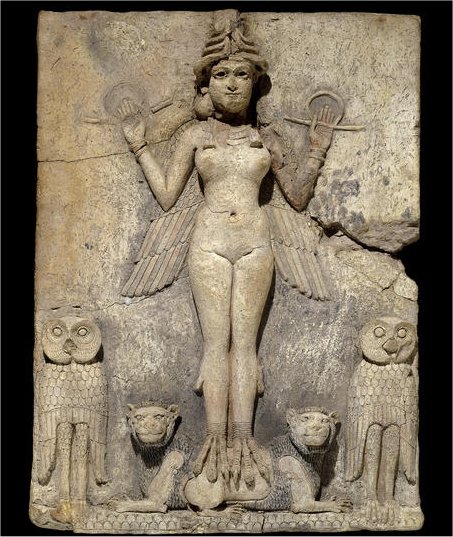
The goddess Inanna, who made love, and war. Don’t mess with her.
It turns out the actual history of the Tarot dates back to 15th Century Italy, where the decks were used for parlor games by the wealthy, not fortune telling. These hand-painted cards became known as tarocchi. Their predecessors came from the Middle East, with the Mamluk playing cards that spread to Western Europe. Prior to that, cards known as Ganjifa in Persia may have influenced the Mamluk version. The origin of the first set of playing cards is shrouded in history, but is thought to be 9th Century China or even earlier.
Although the real story behind the Tarot doesn’t have the glamour of an ancient divination technique dating back to the ancient Egyptians, the storied cards have inspired art on the creepy and miniature scale of Aleister Crowley’s the Book of Thoth deck, and on the whimsical and grand scale of the Tarot Gardens.

Yes, those are quite massive mammary structures.
We spent a pleasant afternoon in the Garden, climbing around and even into the gigantic sculptures decorated with mosaic tiles and glittering mirrors.

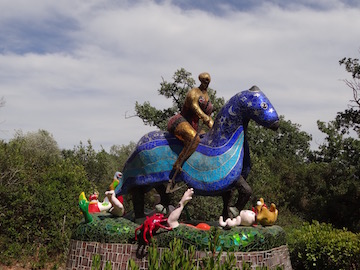
Water dripped and splashed, and hundreds of visitors posed for selfies in front of the structures.
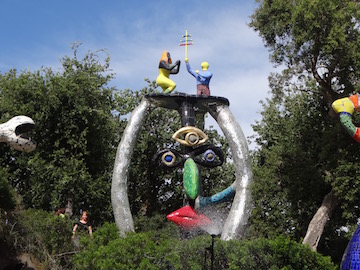
My personal goddess deck of the Tarot, as it turns out, fits in well with the park’s themes of exploring and celebrating the female body.
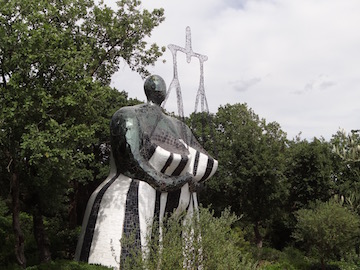


If you’re visiting near Tuscany and have a car, the park is well worth the search if you want a different kind of art experience in Italy. Not sure if you’ll get there? Lay out your cards and see if the future holds a trip to Il Giardino dei Tarocchi.


